At what temperature does summer tires lose their properties. Using summer tires in winter and possible consequences
There is very little time left until the moment when motorists of the CIS countries will open the spring-summer season, "changing shoes" for their car. In other words, the operation will start summer tires. But how successful it will be depends on many factors.
Inexperienced motorists do not seriously consider the problem of choosing and timely replacement of winter tires with summer tires, or they prefer to drive "all-weather" tires. Unfortunately, the statistics of accidents on seemingly clean, dry, not frozen roads, and even with a tragic outcome, is inexorable. Often the “wrong” tires are to blame.
In order for the operation of summer tires in Orekhovo-Zuevo and throughout Russia to evoke only pleasant associations with the incomparable pleasure of driving your favorite car, experts recommend following certain rules. It will take no more than 5 minutes to get acquainted with them, but the effect is excellent.
Summer tires: features
- the composition of the rubber mixture;
- tread pattern.
Due to the fact that the period of operation of summer tires falls on a warm and relatively warm (off-season) season with its characteristic stable positive temperatures of the ambient air and roadway, the chemical composition of rubber for summer tires provides optimal density, elasticity and wear resistance to “warm” tires .
Summer tires in positive conditions (the approximate barrier is stable +10⁰С) temperatures do not become too soft and supple (which will inevitably happen with winter tires). Thanks to this, each wheel of the car reliably “holds on” to the road, without wearing out at a rapid pace.
The operating conditions of summer tires also determined the appropriate tread pattern, thanks to which dust and moisture are effectively removed from under the wheels, providing rubber and the road with a strong contact in the spot. A feature of the "summer" tread is its asymmetry, narrower grooves and the absence of small sipes.
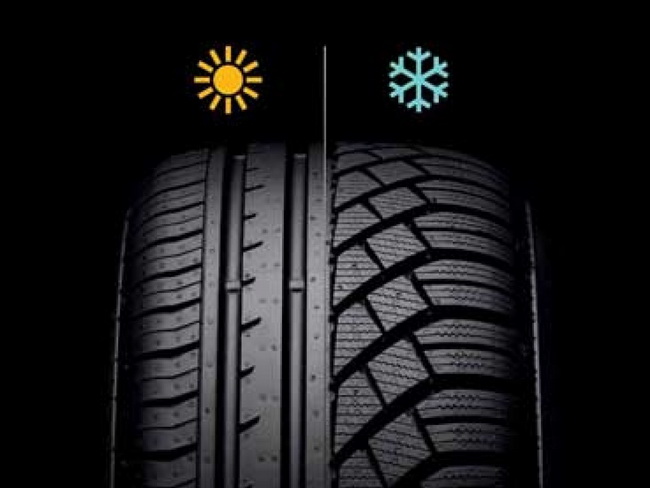
Lifetime
When deciding on the purchase of a new set of summer tires, every motorist is interested in the service life of summer tires. Is it worth it to overpay? How long a set of tires will last is influenced by factors such as:
- brand (brand) of tires;
- composition, design features;
- driving style and conditions;
- storage conditions.
The service life of summer tires cannot be expressed in terms of years or seasons. However, we can confidently say that domestic products wear out after a run of 60-80 thousand km, while foreign tires are able to “run” up to 160-180 thousand km, showing higher grip, handling and safety properties.
Spring-summer operation of the car implies a tighter grip of the wheels with the roadway and increased rolling resistance. On the one hand, this is good - the braking distance becomes shorter. On the other hand, the car has to develop more power for acceleration, as a result of which fuel consumption and rubber wear increase.
The special composition of tires, pattern and design of rubber allows to reduce tread abrasion. The leading role in the intensity of wear is played by the driving style and features of the operation of the machine.
With a calm ride, avoiding sudden acceleration and braking, cornering, driving mainly on asphalt, the operation of summer tires in Orekhovo-Zuyevo can stretch up to 4-5 seasons (foreign recognized brands) and 3-4 (domestic).
Not only the operating temperature of summer tires affects its durability, but also storage conditions:
- If the tire is put on a rim (another set of wheels is installed, for example, with rims of a smaller radius for winter conditions), then the wheels must be suspended or stacked on top of each other.
- In cases where only rubber is being replaced, the tires should be placed next to each other, without stacking or hanging them.

An important condition is the observance of a relatively constant temperature regime. For summer tires (or complete wheels), the optimal temperature parameters in the room are 15-25⁰С. The tire storage should be well ventilated, and the tires themselves should be stored clean and dry, pre-treated with a protective compound.
summer tire requirements
High-quality tires according to the season are comfort and safety behind the wheel. It is not enough just to “change shoes” on the car in time. It is extremely important to monitor the degree of tread wear.
According to the new traffic rules that have come into force, the maximum allowable wear of summer tires is considered to be such that the residual tread depth is at least 1.6 mm (for winter tires - 4 mm). However, tires should not be “brought” to such a state, especially when driving frequently at speeds over 70 km / h, because the rubber practically does not cling even to a dry road.
For the query “summer tires service life and causes of wear”, the search engine may give the wrong tire size selection. Do not try to "pull" smaller tires on the rims. This will not only lead to increased wear, but also significantly reduce the level of safety, worsen the handling of the car.
When choosing tires, you should be guided solely by the technical requirements and recommendations of the car manufacturer. On some brands, experiments with dimensions are unacceptable, even in terms of side height and width. However, for the period of operation of summer tires for most cars, the choice of tires that are slightly larger in size, but not smaller, will not be critical.
Features of installation and operation
Installation on the same axle of tires is not allowed different type- diagonal and radial. If there is no other way out, then diagonal ones should be installed in front, and radial ones in the back, regardless of the drive of the car. This will keep the car in control.
The operation of summer tires is associated with regular pressure monitoring. There is no definite value, but for passenger cars, the average range is 1.8-2.5 atm, depending on the degree of car load (overload for every 10% "gives" 10% increased tire wear) and road conditions. It is important to maintain the same pressure in all wheels.
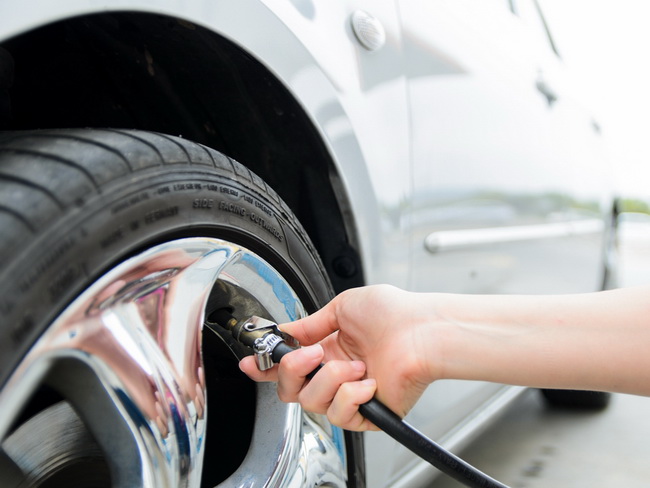
As soon as the air temperature steadily drops below 8-10⁰С in autumn and the roadway cools down, blown by the autumn wind and washed by cold rains, the spring-summer operation is considered over, and it's time to get the winter kit. Summer tires in the cold season simply "dube", not performing gripping functions, but, at the same time, intensively wearing out.
Tire selection form
Specially to make it easy for you to choose suitable tires for your car, we have developed the most convenient form of tire selection.
With this form, you will be able to choose the model that suits your car. So, now it will be easier for you to decide which summer tires are better to choose.
Exploitation winter tires
Due to the large temperature differences in winter and summer, it became necessary to separate car tires seasonal applicability. The rubber that a summer tire is made of is designed to summer period. In the cold season, it hardens, thereby deteriorating tire grip. This leads to such undesirable consequences as a deterioration in handling, a decrease in braking efficiency and vehicle stability on the road. Winter tires must be used at air temperatures of +7C and below. At such temperatures, the rubber compound of tires most fully reveals its operational potential.
In our time, tire production technologies have reached such heights that the quality of tires from various world leaders is practically no different. Therefore, when you choose tires from such well-known manufacturers as Bridgestone, Yokohama, Good Year, Michelin or Nokian Tires for your car, Kama Euro, Amtel and Cordiant can be distinguished from domestic brands as the highest quality and corresponding to world analogues.
In winter tires, the tread blocks are larger, have thin slots (lamellae), often have sawtooth edges - this improves the car's flotation and enhances wheel grip on ice.
1. The main condition is that all the tires you install on the car must be of the same type. Install winter tires only on the leading axle is wrong. If such tires are installed only on the front wheels, then the traction force of the rear wheels will be much less - the risk of the car skidding around the front axle. If winter tires are installed only on rear wheels a front-wheel drive vehicle, this can also result in loss of control, as the front-wheel drive will have poor traction on slippery roads. On all-wheel drive vehicles, all four wheels must necessarily have the same wheels, otherwise the wear of the vehicle transmission will increase significantly.
2. Spikes or Velcro?
Studded tires should be purchased when the car is mainly used outside the city. Country roads are worse cleaned and there are areas covered with ice. The driver must have certain skills to drive a car in ice. When operating a car in a city where the roads are well cleaned and sprinkled with anti-icing reagents, it is better to use friction tires (with natural grip, Velcro).
3. Demi-season (all-weather) tires can be used with limited vehicle operation in winter.
You need to be careful when driving, as these tires have much worse grip on ice than on paved roads.
4. In winter, it is better to start driving at a low speed (about one kilometer) so that the tires can “warm up” a little. A cold tire has a lower self-cleaning ability, and if frozen water has accumulated in the slots of the lamellas while the car is parked, then handling may decrease.
5. During the seasonal replacement of studded wheels, make sure that the direction of rotation remains the same, that is, only one side of the car can be swapped wheels.
This is due to the fact that the spikes during movement unilaterally deform the holes into which they are inserted. If you change the direction of movement, then the second side will also be deformed and the spike may fall out, and the spike again installed in the hole will not hold well. Therefore, before storing tires, you should mark on which side of the car they stood.
6. In winter, it is better to put narrower tires with a higher profile height - the car's patency in the snow improves, since the pressure at the point of contact of the tire with the road surface increases.
7. Constantly monitor tire pressure. Driving with half-flat tires causes rapid tire wear and premature stud failure in studded tires. Air temperature also affects tire pressure - the lower the temperature, the lower the pressure. During the cold season to normal pressure in wheels it is better to add 0.2 bar.
8. One more important rule: before each installation of new tires on a car, check the condition of the suspension parts, shock absorbers, steering, if necessary, adjust the wheel alignment - all this will increase the life of the tires.
And one more piece of advice. Do not forget that driving in winter should be calm, balanced, try to keep a safe distance from the car in front. Be careful and attentive on the road, do not make any sudden maneuvers. Believe me, even with the most expensive and high-quality tires, the winter road does not become summer
Many economical car owners often ask the question: is it worth changing winter tires for summer ones with the onset of spring, or can you successfully drive through the summer without removing winter tires, especially if they do not have studs? After all, in the past, people drove perfectly on a single set of tires for many years and did not even suspect that there were “separate” tires for winter and summer (and there were practically none). We will try to briefly explain why tires intended for different seasons operation. The rubber composition of summer ("road") tires is made as hard as possible to increase wear resistance. The tread blocks are made large in order to increase the contact patch with the coating (note that tires designed for high-speed sports cars have even larger tread blocks, and sometimes even merge into one smooth surface - such tires are called "slicks"). It is clear that nothing good can be expected from summer tires in winter: their rubber “dubs”, the tread grooves become clogged with snow, and the absence of lamellas (small “cutting” of checkers) causes slipping on ice and rolled snow.
With winter tires, the opposite is true. Initially designed for operation on snowy and icy roads at sub-zero temperatures, they do not turn into "plastic" and retain acceptable elasticity even at -30°C. The tread pattern of winter tires is usually thinner than that of summer tires for better self-cleaning from packed snow. The tread blocks have lamellas - thin winding slots for better grip on snowy and icy surfaces. Some winter tires are designed for studding. The spikes are installed in separate tread blocks that do not have sipes. Many owners, having tried to use winter tires for the first time in winter, were convinced that they are incomparable with summer ones. Tires Nokian, Gislaved, Michelin, Continental are deservedly considered "leaders" in conquering icy and snowy roads.
Why not, or rather, why not use winter tires in summer? Indeed, in theory, the soft composition of the rubber compound should work better on asphalt and concrete. The fact is that this composition will not withstand such a “hard” operation, and the tires will wear out quickly, becoming unsuitable for winter. In addition, winter tires on clean, dry pavement become very "pliable". Try stepping on a brush with the bristles up. You will feel about the same as a winter tire on the pavement "feels": the instability of the situation.
This entails such dangerous phenomena as the deterioration of directional stability, handling, braking properties. The car sluggishly, belatedly reacts to turning the steering wheel, and during maneuvers it “floats” along the entire lane. Slowdown occurs reluctantly, sluggishly, the stopping distance increases. It increases even more noticeably when using studded tires in summer. Among other things, winter tires are very noisy, and with increasing speed (we usually drive faster in summer than in winter), the noise becomes more noticeable, and vibrations can also appear. Conclusion: the use of winter tires in summer is not only uneconomical, but to some extent even dangerous. Although not in the same way as using summer tires in winter.
Tires for a car, oddly enough, require running-in, as well as many other new components and assemblies. Many drivers forget about it or simply do not know. The rubber must be rolled in before its performance meets the manufacturer's specification. There are significant differences between running in winter and summer tires. Car enthusiasts should know how to break in winter studded tires.
The tire has a rather complex structure and consists of various materials: rubber, plastic, metal. All these elements begin to fully work in the complex only after the start of operation, as well as the engine itself, which requires mandatory running-in, running-in of parts. A modern car tire is not as simple as it seems (especially winter tires). Most winter car tires have studs. In the manufacture of tires, they are installed using a special lubricant. It gives the rubber a special elasticity at the junction of the spikes. In other words, the spikes must “self-align” during operation. Winter tires work in rather difficult conditions. Therefore, their running is a very important point in their operation. New tires on a wet, icy, snowy road will behave completely differently than already rolled ones. This moment can be a very unpleasant surprise when a car enthusiast puts the same set of tires on the car at the beginning of winter, on which he has driven more than one season, and is faced with the uncertain behavior of the car, a tendency to skid, and frequent slippage.
How to break in winter studded tires
The further resource and trouble-free operation of tires depends on the correct and timely processing. There are several key points on how to properly break in new winter studded tires. Let's take a look at them below.
Temperature mode of operation
New winter tires are extremely undesirable to operate immediately in cold weather. It is better to change the wheels before the onset of cold weather (a stable negative temperature). Why exactly? Because at a negative temperature, the rubber will have to fully engage in work. In this case, it will wear out suboptimally and the car itself will be less manageable.
Optimum tire pressure
Tire pressure should always be optimal. Shouldn't be ignored this moment. With excessive pressure, not only the tire suffers (especially the studded one - spikes fly out), but also the suspension elements, the body. 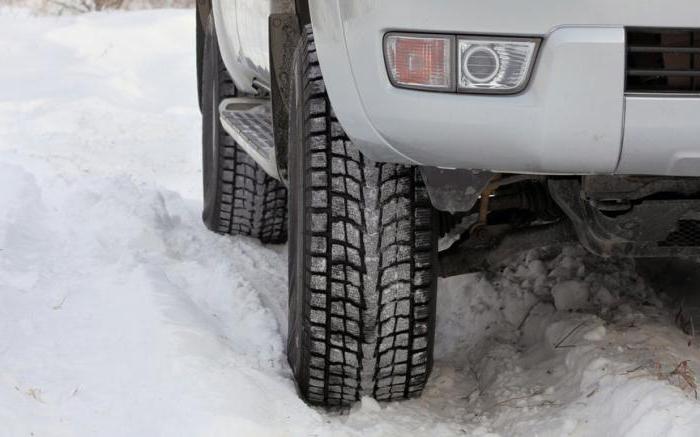 When lowered, the risk of punching a tire in large pits and potholes increases. The wheel rim, which is wrinkled, and the sidewall of the tire suffer. On the latter, the cord bursts and a “hernia” comes out (such cases are not at all uncommon). The spikes are quickly lost. Therefore, before running in winter studded tires, you should check the pressure in them.
When lowered, the risk of punching a tire in large pits and potholes increases. The wheel rim, which is wrinkled, and the sidewall of the tire suffer. On the latter, the cord bursts and a “hernia” comes out (such cases are not at all uncommon). The spikes are quickly lost. Therefore, before running in winter studded tires, you should check the pressure in them.
Speed limits
During the break-in of such tires, it is advisable not to exceed the speed of 60 km / h. This is a small figure even in the city. But for the sake of the safety of the tires, you should be patient for 500 kilometers. In this way, a significant number of spikes can be saved.
Calm driving
How to break in winter studded tires? You have to ride it for quite a long time - it is highly desirable to adhere to a calm and careful driving style. Avoid sudden acceleration and deceleration, slippage and lane changes. 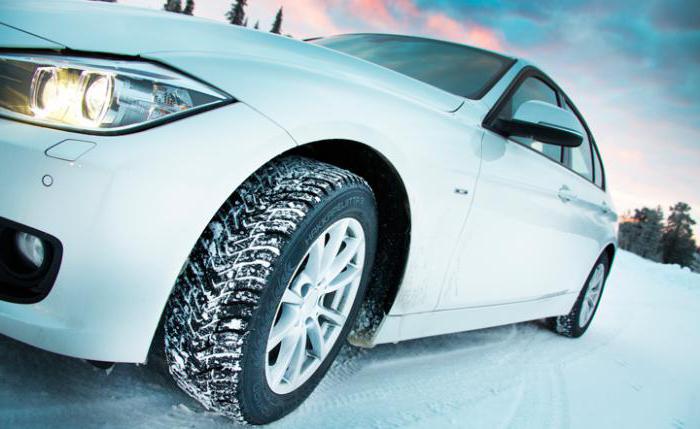 In general, calm driving is encouraged in the rest of the winter. The coefficient of adhesion of snow and ice is much lower than even that of wet asphalt. Therefore, careful driving will save a lot of nerves, and sometimes money. Also, with an aggressive manner, the wheel rotates faster or slower than the others (slippage or skidding), which most detrimentally affects the duration of the spikes in the tire. So, with sudden braking or acceleration, the spikes remain on the road. This must always be remembered.
In general, calm driving is encouraged in the rest of the winter. The coefficient of adhesion of snow and ice is much lower than even that of wet asphalt. Therefore, careful driving will save a lot of nerves, and sometimes money. Also, with an aggressive manner, the wheel rotates faster or slower than the others (slippage or skidding), which most detrimentally affects the duration of the spikes in the tire. So, with sudden braking or acceleration, the spikes remain on the road. This must always be remembered.
road surface
How smoother road, all the better. If the tire does not deform while riding, you are more likely to keep the studs in the future. Deep holes, potholes, curbs can adversely affect their condition.
Periodic maintenance
How to break in winter studded tires? At this time, it is necessary to constantly monitor the cleanliness of tires, remove small stones stuck in the tread pattern. Naturally, to prevent improper tire wear. 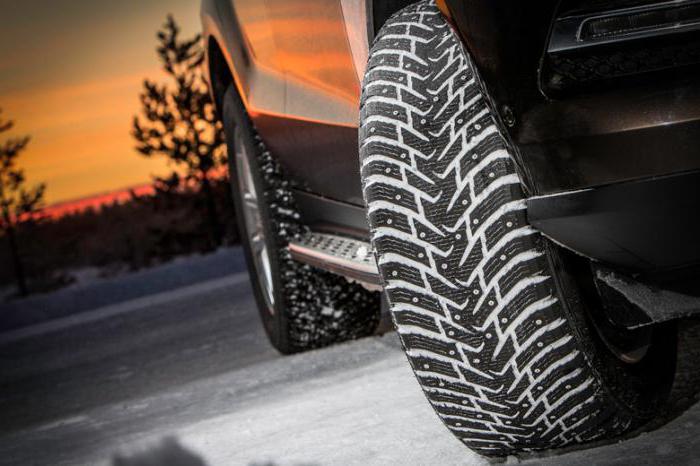 Do not be lazy to check the correct camber and convergence of the wheels and inflate the tires after they have cooled down (not immediately after the trip). Some manufacturers install special indicators on the wheels that wear out at the end of the break-in and show how to break in winter studded tires correctly. This detail is also worth paying attention to.
Do not be lazy to check the correct camber and convergence of the wheels and inflate the tires after they have cooled down (not immediately after the trip). Some manufacturers install special indicators on the wheels that wear out at the end of the break-in and show how to break in winter studded tires correctly. This detail is also worth paying attention to.
Wheel balancing
How to break in winter studded tires? Naturally, before installing new wheels, they must be balanced, this is a common procedure. How to break in winter studded tires - important information. But it is also important to know that re-balancing is required after some time. The spikes during break-in can sink into the tire (or vice versa, they begin to protrude more strongly). In addition, some of them may fly out.
Features of the operation of new winter tires
Before running in winter studded tires, it is advisable to ask the manufacturer's recommendations regarding their operation. Rules can vary greatly depending on the climate and general weather conditions in which the machine will be used. 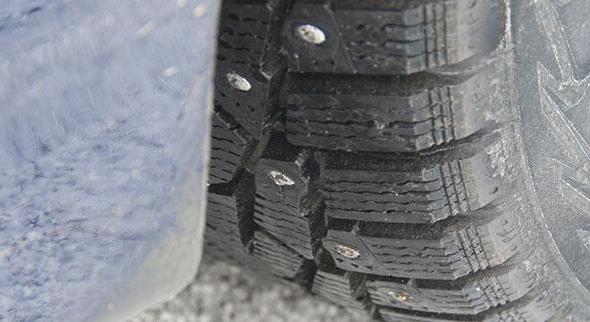 Some tires require a special speed during use, and these recommendations should not be neglected. big mistake are made by motorists who install winter tires on only one axle of the car. Usually they are bought for driving wheels, explaining that studded wheels will slip less. Partly it is. However, the following should be taken into account. Firstly, winter tires differ from summer tires not only in the presence of spikes (not all, by the way, have them) and a rougher pattern with no drainage. The main difference is in the composition of the rubber and the thickness of the frame. The tire in the cold should not tan.
Some tires require a special speed during use, and these recommendations should not be neglected. big mistake are made by motorists who install winter tires on only one axle of the car. Usually they are bought for driving wheels, explaining that studded wheels will slip less. Partly it is. However, the following should be taken into account. Firstly, winter tires differ from summer tires not only in the presence of spikes (not all, by the way, have them) and a rougher pattern with no drainage. The main difference is in the composition of the rubber and the thickness of the frame. The tire in the cold should not tan. 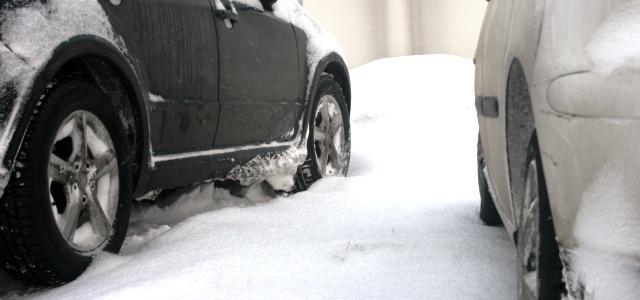 Summer tires do not have this property. It becomes harder, and even lowering tire pressure will not help here. This, by the way, explains the recommendation in Soviet manuals for motorists (on reducing pressure in winter). In the 70s and 80s, studded winter tires could only be dreamed of. All went to the all-weather, universal. We have not even heard of how to break in new studded winter tires. The second point is that summer tires are not suitable for driving on ice, they simply slide over it, increasing braking distances several times. Therefore, installing winter tires on all wheels in winter is a mandatory procedure. Moreover, it is advisable to change all four at once to avoid uneven wear. It should be purchased from one seller and put wheels from a single manufacturer.
Summer tires do not have this property. It becomes harder, and even lowering tire pressure will not help here. This, by the way, explains the recommendation in Soviet manuals for motorists (on reducing pressure in winter). In the 70s and 80s, studded winter tires could only be dreamed of. All went to the all-weather, universal. We have not even heard of how to break in new studded winter tires. The second point is that summer tires are not suitable for driving on ice, they simply slide over it, increasing braking distances several times. Therefore, installing winter tires on all wheels in winter is a mandatory procedure. Moreover, it is advisable to change all four at once to avoid uneven wear. It should be purchased from one seller and put wheels from a single manufacturer.
Conclusion
Knowing how to break in new studded winter tires is an important step in maintaining your car. The durability of the chassis, the safety of the driver and passengers depend on the correctness of its implementation.
Most tire manufacturers guarantee that their winter tires provide a safe ride with a tread depth of at least 4mm. In a number of countries, this minimum for winter tires is set by law. In Russia, technical regulations Customs Union the same norm was introduced quite recently - from January 1, 2015.
With a negative profile less than 4 mm deep, winter tires cannot effectively remove water and slush from the contact patch. Significantly deteriorating patency in deep snow.
Running in
When installing new studded tires, it is recommended to run them in: for the first 500 km, drive, avoiding sharp maneuvers, acceleration and braking, it is advisable to keep the speed no higher than 80 km / h. As a result, the spikes are evenly seated in the landing sockets, thereby reducing the risk of their falling out.
Note that even companies that already use enhanced stud retention technologies recommend running in studded tires. For example, this is officially advised by Yokohama, which uses an optimized seat and a cruciform lower stud flange in the IceGUARD iG 55 tire, and Continental, which uses a thermosetting adhesive compound in the tire that glues the stud into the tread.
For new non-studded tires, it is also recommended that the first hundreds of kilometers be subject to a restriction in speed and sharpness of maneuvers. In some cases, this is due to the need to remove the smooth outer tread layer with traces of technical fluids left after the factory mold.
The manufacturer's recommendations also have a hidden psychological effect. When switching to a different type of tire with damped steering response, many drivers take some time to adjust their skills. Therefore, even experienced car owners, after a seasonal tire change, it is advisable to take special care on the roads for the first time.
Tire swap
During operation, tires wear unevenly. The pattern and degree of wear depends on many factors: type of tread, location on the vehicle, prevailing road surface, individual driving style, etc. With noticeable uneven wear, it is necessary to rearrange (rotate, castling) the wheels.
There are quite a few ready-made rearrangement schemes - they depend on the degree and place of wear, tread pattern, type of car drive, rotation of four or five (with spare) wheels. It is more effective to approach the process individually, guided by the basic principles.
1. Tires with a less worn tread, as well as those that have not been repaired, are placed on the front axle. They drive the car, experience the main load in cornering and braking, and are the first to emerge during hydroplaning. Most cars and a crossover with a plug-in all-wheel drive they are driving wheels.
2. When installing symmetrical non-directional and directional tires, there should be less worn shoulder area on the outside. For directional tires, the fit must be in the direction of rotation.
3. Asymmetric tires change according to the marks indicating the outer and inner parts of the tire (outside-inside). If these tires are also directional, then the number of combinations is narrowed - it is possible to change only the front-rear wheels on each side.
Tire pressure
The tire pressure recommended by the automaker depends on the size and load of the machine, it is indicated in the instructions. However, in winter, the air in an enclosed space is compressed, the pressure in the tires drops, so you can find recommendations to inflate tires by about 0.2 atm more. This tip only comes in handy if you're doing it in a heated garage and then driving out into the cold. On the street, you should inflate exactly to the recommended mark - at street temperature you will get the desired degree of pumping. Winter requires constant monitoring of pressure. With a sudden change in temperature, it should be re-measured and corrected up or down.
In addition to the uneven wear of the shoulder area, the lack of pressure leads to increased fuel consumption, which is already higher than usual in winter. The distribution of pressure in the contact patch is also disturbed, the central zone works less well, which in winter tires is usually responsible for acceleration and braking dynamics and directional stability. On the contrary, excess pressure reduces the efficiency of the shoulder area, which worsens grip in corners, which is especially dangerous on slippery roads.
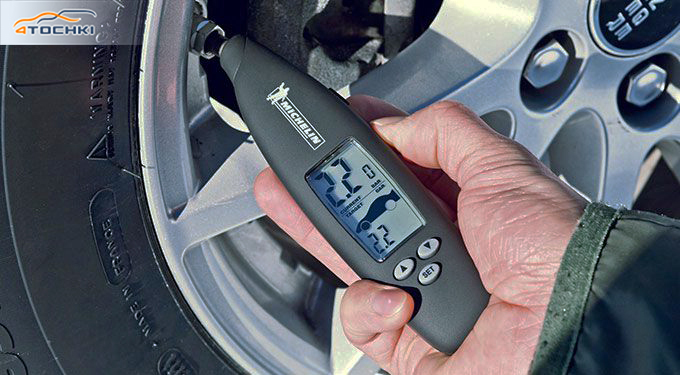
Compliance with the temperature regime
Winter tires begin to lose traction and mileage at an average daily temperature of over +7 degrees. If your climate zone is dominated by a warm "plus" winter with rare frosts and snow, then it may make sense to purchase all-season models, but with the "M + S" index.
If the winter is only relatively mild, winter non-studded tires for "black roads", aka "European", will suit you. Their rubber compound works effectively down to a temperature of minus 10-15 degrees, but their traction and braking characteristics, handling and road holding on wet and dry pavement are noticeably better than those prevailing in Russia for severe winter models. The opposite is also true - you should not use "European" tires in regions with severe frosts.
Tire care

Winter tires, along with rims, should be washed regularly to remove dirt and harmful road chemicals. In this case, it is better not to immediately go to hard frost so that the water in the microcracks, expanding, does not spoil the rubber and protective layer on disks. Special tire conditioning compounds can help, which fill microcracks and form a thin protective film.




